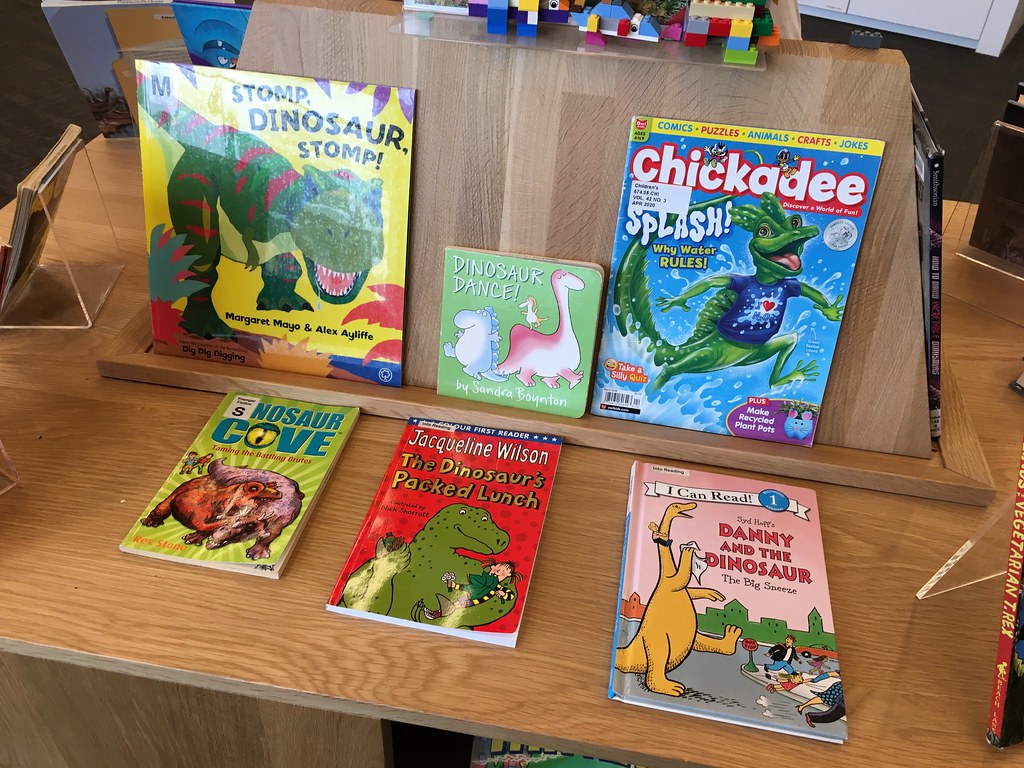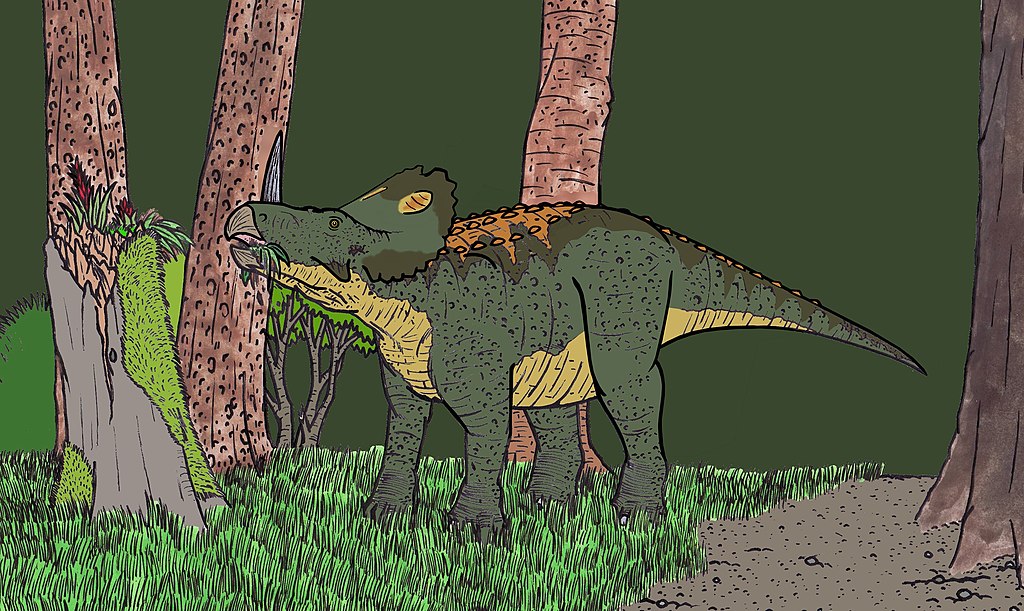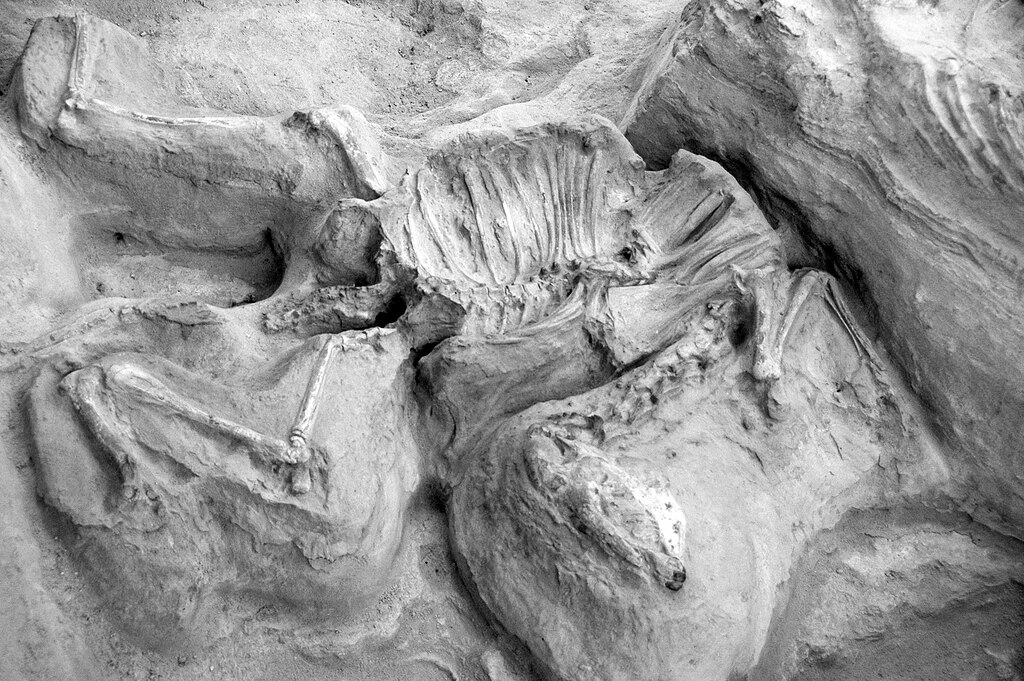Dinosaurs continue to captivate children’s imaginations like few other subjects can. These prehistoric creatures offer the perfect blend of scientific discovery and monstrous wonder that keeps kids coming back for more. A well-curated dinosaur book collection not only entertains but educates, helping children develop a love for natural history, science, and reading. The best dinosaur books combine accurate paleontological information with engaging illustrations and storytelling that brings these ancient beasts to life. Whether your child is a budding paleontologist or simply loves the thrill of learning about these magnificent creatures that once ruled our planet, these twelve essential dinosaur books deserve a permanent place on their bookshelf.
“Dinosaur Encyclopedia” by DK Publishing
This comprehensive encyclopedia serves as the perfect foundation for any child’s dinosaur library. With stunning full-color illustrations and photographs of fossils and museum specimens, it presents dinosaurs in their full scientific context. Each entry includes information about when and where the dinosaur lived, its size, diet, and notable features. What sets this encyclopedia apart is how it incorporates the latest paleontological discoveries, ensuring children learn current scientific understanding rather than outdated theories. The book also includes fascinating sections on how fossils form, how paleontologists work, and the evolutionary relationships between different dinosaur species. For children who want to explore beyond just the “famous” dinosaurs like T. rex and Triceratops, this volume provides a wealth of information on lesser-known but equally fascinating prehistoric creatures.
“How Do Dinosaurs Say Goodnight?” by Jane Yolen and Mark Teague
For younger dinosaur enthusiasts, this charming picture book blends bedtime routines with accurate dinosaur illustrations. Jane Yolen’s rhythmic text poses questions about how dinosaur children might behave at bedtime, while Mark Teague’s illustrations show various dinosaur species acting like mischievous children before eventually settling down properly. What makes this book special is the attention to scientific detail in the illustrations—each dinosaur is labeled with its correct name and depicted with anatomical accuracy, despite the whimsical setting. The combination of realistic dinosaurs in familiar domestic scenes helps young children connect with these ancient creatures in a relatable way. This book also serves as a gentle lesson in proper bedtime behavior, making it both educational and practical for parents. The “How Do Dinosaurs” series continues with many other titles addressing different childhood scenarios, but this original remains a classic starting point.
“National Geographic Kids Ultimate Dinopedia” by Don Lessem
Written by renowned dinosaur expert Don Lessem (nicknamed “Dino Don”), this comprehensive guide stands out for its blend of scientific accuracy and kid-friendly presentation. The book features over 350 dinosaur profiles with specially commissioned artwork showing how these creatures likely appeared in life. What makes this dinopedia exceptional is how it organizes dinosaurs by their evolutionary relationships and geographic locations, helping children understand dinosaurs as diverse animals adapting to specific environments rather than as a monolithic group. Each entry includes a pronunciation guide, size comparison with humans, and fascinating “Dino Don’s Field Notes” sharing interesting behaviors or discoveries. The book also addresses common dinosaur myths and misconceptions, helping children develop critical thinking skills when encountering dinosaur information in other media. National Geographic’s trademark photography quality extends to the fossil images and museum exhibits featured throughout the book.
“Dinosaurs: A Visual Encyclopedia” by DK Publishing
This visual treasure trove goes beyond just dinosaurs to explore the entire Mesozoic Era and the many creatures that lived alongside the dinosaurs. What distinguishes this encyclopedia is its emphasis on prehistoric environments and ecosystems, helping children understand dinosaurs in their proper context. The book features detailed illustrations of marine reptiles, pterosaurs, early mammals, and prehistoric plants that shared the world with dinosaurs. Each two-page spread focuses on a different group of animals or a specific prehistoric time period, with special attention to how different creatures interacted with each other. The book includes cutting-edge information about dinosaur coloration, behavior, and physiology based on the latest fossil discoveries and research. Children particularly appreciate the size comparisons that show how dinosaurs measured up against familiar modern objects and animals, helping make their sometimes astonishing dimensions more comprehensible.
“Magic Tree House Fact Tracker: Dinosaurs” by Will Osborne and Mary Pope Osborne
This companion book to the popular Magic Tree House adventure series offers a perfect bridge between fiction and nonfiction for young readers. The fact tracker format provides thoroughly researched information about dinosaurs in a narrative style that maintains the engaging quality of the fiction series. Unlike many dinosaur books that overwhelm with technical terminology, this volume introduces paleontological concepts gradually, building children’s vocabulary and scientific understanding at an appropriate pace. The book excels at explaining how scientists make discoveries about dinosaurs, introducing children to concepts like fossilization, excavation, and scientific inference. Particularly valuable are the sections on how our understanding of dinosaurs has changed over time, helping children grasp the evolving nature of scientific knowledge. The accessible writing style makes this an ideal first “serious” dinosaur book for children transitioning from picture books to more information-dense reading material.
“The Big Book of Dinosaurs” by DK Publishing
Specifically designed for preschool and early elementary children, this oversized format book captures attention with its vivid, large-scale illustrations. What makes this book outstanding is how it categorizes dinosaurs into easily understandable groups like “Big Dinosaurs,” “Armored Dinosaurs,” and “Meat-Eaters,” creating a simple taxonomy that young children can grasp before learning more complex classification systems. Each dinosaur is presented with a pronunciation guide and basic facts about size, diet, and habitat, all written in simple language perfect for new readers. The book includes interactive elements like “Did You Know?” boxes and simple quizzes that encourage active engagement with the material. Particularly effective are the illustrated size comparisons showing dinosaurs next to school buses, houses, and other objects familiar to young children. For many children, this serves as their introduction to the concept of scientific illustration as distinct from artistic interpretation.
“Digging Up Dinosaurs” by Aliki
This classic work focuses not on dinosaurs themselves but on the science of paleontology and how fossils are discovered, excavated, and studied. Through a combination of straightforward text and detailed illustrations, Aliki walks children through the entire process from fossil formation to museum display. The book explains complicated concepts like fossilization and geological time in terms children can understand without oversimplification. Particularly valuable is the depiction of paleontologists as diverse individuals engaged in different aspects of dinosaur research, from fieldwork to laboratory analysis. The book emphasizes that paleontology is an ongoing science with new discoveries constantly changing our understanding of dinosaurs. By focusing on the scientific process rather than just dinosaur facts, this book helps children understand how we know what we know about these extinct creatures. For many professional paleontologists, this book was their first introduction to the field that eventually became their career.
“Dinosaurs Before Dark” by Mary Pope Osborne
The first installment in the wildly popular Magic Tree House series blends fantasy adventure with factual dinosaur information. When siblings Jack and Annie discover a tree house filled with books that can transport them through time and space, their first adventure takes them to the late Cretaceous period. While primarily a chapter book story, Osborne carefully incorporates accurate information about Pteranodon, Triceratops, and Tyrannosaurus rex into the narrative. The book serves as an excellent introduction to dinosaurs for children who prefer story-based learning to encyclopedic formats. Particularly effective is how the characters’ misconceptions about dinosaurs get corrected through their experiences, mirroring how children’s own understanding might evolve with learning. The book sparks curiosity that often leads children to seek out more factual dinosaur books, making it a gateway to scientific interest. For early independent readers, the combination of adventure, accessible text, and dinosaur subject matter makes this an irresistible read.
“Dinosaur Bones” by Bob Barner
This rhythmic, rhyming book introduces the concept of dinosaur fossils and skeletal structure to preschool and early elementary children. Barner’s distinctive collage-style illustrations pair detailed dinosaur skeletons with colorful renderings of how the animals might have appeared in life. The book stands out for its focus on comparative anatomy, showing how dinosaur bones compare to human bones and how different dinosaur species had specialized skeletal adaptations. Simple but scientifically accurate text explains how paleontologists use fossils to learn about dinosaur appearance, diet, and behavior. The book concludes with a helpful spread showing a human skeleton alongside various dinosaur skeletons, all to scale, allowing for direct size comparison. This approach introduces young children to concepts of anatomy and physical adaptation that build a foundation for later biological understanding. The book’s vibrant artwork and rhythmic text make it a popular read-aloud choice that children request repeatedly.
“Dinosaurs, Dinosaurs” by Byron Barton
For the youngest dinosaur enthusiasts, this board book offers a perfect introduction with its bold, bright illustrations and simple text. Barton focuses on the most distinctive features of popular dinosaur species, introducing concepts like herbivore and carnivore without using technical terminology. The book’s simplified illustrations emphasize characteristic dinosaur features that even toddlers can recognize and remember, such as Stegosaurus plates, Triceratops horns, and Tyrannosaurus teeth. Each dinosaur is shown in a minimalist environment that suggests its habitat—mountains, forests, or plains. Despite its simplicity, the book maintains scientific accuracy in its basic representations of dinosaur appearance and behavior. The limited text makes this accessible to very young children while still conveying fundamental information about different dinosaur types. Many paleontologists and dinosaur enthusiasts report that this was the very first dinosaur book they owned as children, making it something of a gateway book to a lifetime of dinosaur interest.
“The Complete Guide to Prehistoric Life” by Tim Haines and Paul Chambers
For older elementary and middle school readers ready for more advanced content, this book offers unprecedented detail based on the award-winning BBC television series “Walking with Dinosaurs” and its sequels. What distinguishes this volume is its expansive scope covering not just dinosaurs but the entire evolution of animal life from the earliest invertebrates to the Ice Age mammals. Each prehistoric creature is illustrated with photorealistic imagery developed for the television series, representing the most scientifically accurate reconstructions available when published. The text delves into sophisticated concepts like evolutionary adaptation, prehistoric climate change, and extinction events at a level appropriate for curious older children. Particularly valuable are the sections explaining how specific fossil evidence led to conclusions about dinosaur appearance, behavior, and biology. The book serves as an excellent transition to adult-level paleontology resources for serious young dinosaur enthusiasts who have outgrown more basic children’s books on the subject.
“Boy, Were We Wrong About Dinosaurs!” by Kathleen V. Kudlinski
This unique book tackles a crucial aspect of science often missing from children’s dinosaur books: how scientific understanding changes over time. Kudlinski traces the history of dinosaur paleontology, showing how early interpretations of dinosaurs as slow, lumbering reptiles evolved into our current understanding of them as active, sometimes feathered, and possibly warm-blooded animals. The book explicitly addresses misconceptions that children might have encountered in older books or media, explaining why these ideas were once accepted and what evidence led scientists to change their minds. This approach not only teaches about dinosaurs but introduces children to the scientific process itself—how hypotheses are formed, tested, and sometimes rejected in favor of better explanations. The illustrations cleverly contrast historical interpretations of dinosaurs with current scientific reconstructions of the same species. For children developing critical thinking skills, this book provides a valuable lesson in how science progresses through constant questioning and reexamination of evidence.
Conclusion
Building a dinosaur library with these twelve essential books provides children with a comprehensive understanding of these fascinating prehistoric creatures from multiple perspectives. From scientifically accurate encyclopedias to engaging storybooks that spark imagination, these selections cover different age ranges, reading levels, and approaches to learning. The best dinosaur books grow with your child, offering new insights and deeper understanding as reading skills and scientific comprehension develop. By incorporating books that address not just what we know about dinosaurs but how we know it, children develop both scientific knowledge and critical thinking skills. Whether read aloud to preschoolers or independently explored by older children, these dinosaur books transform prehistoric fascination into a gateway for broader interest in science, natural history, and the ongoing process of discovery.



